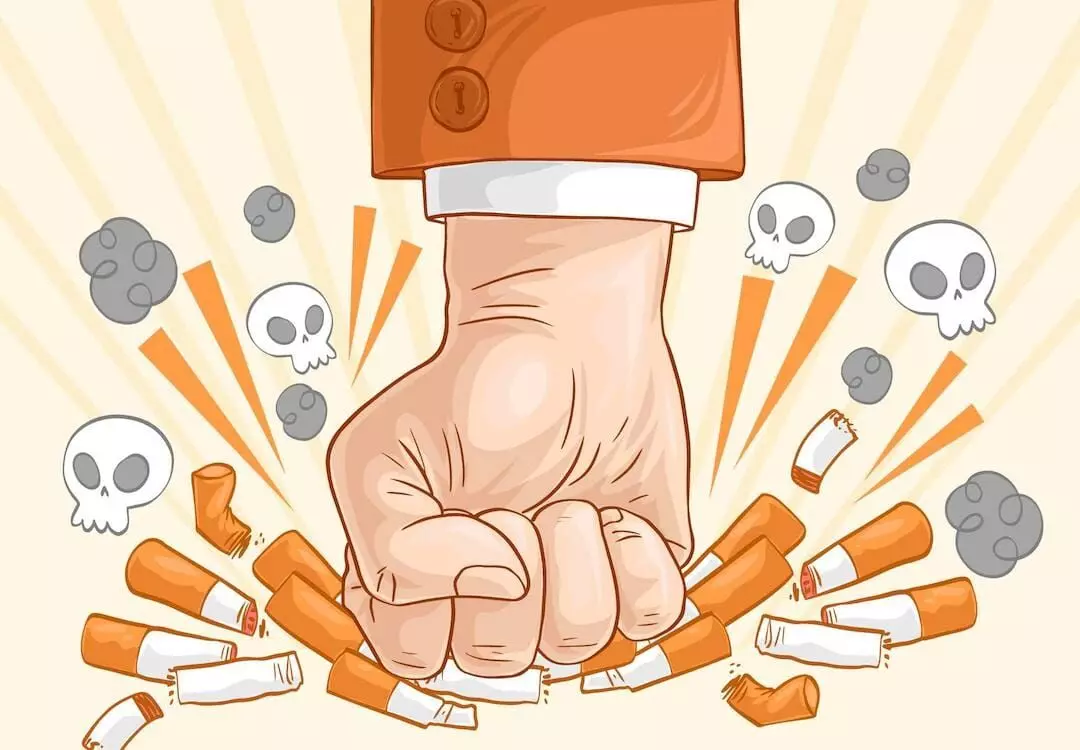World No-Tobacco Day: 70% men, 13-15% women hooked to smoking in India
Though there are not many studies about women smokers in India, the number has increased in the last few decades between 1980 to 2012
By Sulogna Mehta
Hyderabad: Tobacco is a major public health concern across India claiming more than one million lives every year. According to the Global, Adult Tobacco Survey carried out in India in 2016-17, nearly one-third of adults in India were found to be avid users of tobacco. The most common form of tobacco use remains smokeless tobacco, which is used by one-fifth of adults while smoking is used by one-tenth of adults.
The Global Tobacco Epidemic: Some alarming statistics
Tobacco use remains one of the leading causes of preventable deaths globally, causing millions of deaths each year and posing serious health risks to both smokers and non-smokers. About 86% use tobacco for smoking and 14% use it in a smokeless form. Tobacco contains hundreds of chemical agents, which include potent carcinogens like nitrosamines, polycyclic aromatic hydrocarbons, carbon monoxide, hydrogen cyanide, and many others.
According to the WHO, tobacco kills more than eight million people annually, with approximately seven million deaths attributed to direct tobacco use and over one million resulting from exposure to secondhand smoke. The toll on public health is alarming, encompassing various forms of cancer, respiratory and cardiovascular diseases, and other chronic conditions.
India houses second highest number of women smokers
Though there are not many recent studies about women smokers in India, however, the number has increased drastically in the last few decades between 1980 to 2012. India is now home to the second highest number of women smokers globally, after the US.
According to a study published in the British Medical Journal (BMJ), about 70% of adult males in India smoke. Among adult females, the figure is somewhere between 13 to 15%. The main drawback in assessing data for Indian smokers is that such smoking research data is sparse and incomplete unlike in the West, where the smokers’ profiles have been very precisely documented.
Everyone around is aware that tobacco consumption is injurious to health. Yet, for the majority of tobacco users, the allure of tobacco and the cravings it evokes can be overpowering though it will typically subside within 5 to 10 minutes.
Ways to overcome smoking
Dr Ambarish Joshi, senior consultant, Pulmonology, Primus Super Specialty Hospital, New Delhi lists innovative and effective methods to triumph over smoking urges when cravings strike.
Embrace Nicotine Replacement Therapy:
This therapeutic approach by consultation with a healthcare provider consists of various options, such as prescription of nicotine administered via nasal spray or inhaler, over-the-counter nicotine patches, gum, and lozenges, or prescription of non-nicotine cessation medications like bupropion (Wellbutrin SR, Wellbutrin XL, among others) and varenicline. To overcome intense cravings, consider incorporating short-acting nicotine replacement therapies like gum, lozenges, nasal sprays, or inhalers. These prompt-acting treatments are generally safe to use alongside long-acting nicotine patches or non-nicotine cessation medications.
Ditch those triggers:
It is most likely that the potency of tobacco urges gets most pronounced in settings where one habitually smokes or chews tobacco. For instance, parties, bars, moments of stress, or while savoring a cup of coffee are likely scenarios. Identify your triggers and devise a plan to either avoid them or navigate through them without resorting to tobacco.
Social networking:
The formation of social networks by persons who have successfully quit smoking and their motivation for persons in the process of quitting may help psychologically.
Apply delaying tactics:
When struck by an impending tobacco craving, challenge yourself to postpone its enchantment by an additional 10 minutes. During this time, engage in activities that successfully divert your attention. Consider venturing into a smoke-free zone within your vicinity.
Channelise chewing impulses:
Chew on sugarless gum or a piece of hard candy or nuts, sunflower seeds, etc to fend off the urge to chew tobacco.
Beware of the illusion of ‘Just One’:
Do not deceive yourself into believing that stopping at one cigarette will suffice. Often, indulging in a solitary cigarette will lead to another, trapping you once again in the cycle of tobacco usage.
Indulge in physical activities:
Physical exertion can divert your attention away from tobacco or smoking cravings. Venture outdoors for a brisk walk or jog or join a gym.
Global call to action against tobacco
Dr. P Vijay Anand Reddy, director, Apollo Cancer Centre, Apollo Hospitals, Hyderabad says, “World No Tobacco Day serves as a crucial reminder of the ongoing battle against tobacco and its devastating impact on public health. By raising awareness through campaigns and educative programs about the dangers of tobacco addiction, advocating for effective policies, and urging governments to implement and strengthen evidence-based policies to reduce tobacco consumption. This involves advocating for comprehensive tobacco control measures aligning with the WHO Framework Convention on Tobacco Control (FCTC), such as increased taxation, restrictions on advertising and promotion, graphic health warnings, and smoke-free environments.”
“Further, by supporting cessation efforts through affordable medications, counseling services, nicotine replacement therapies, helplines, and support networks and engaging the youth to prevent tobacco initiation, this global campaign strives to create a world free from the harms of tobacco. Governments, health organizations, and international bodies also should collaborate on sharing the best practices, research findings, and strategies for tobacco control. As individuals, we can contribute by spreading awareness, supporting tobacco control initiatives, and empowering others to live healthier lives, free from tobacco addiction,” adds Dr Reddy.